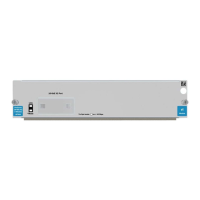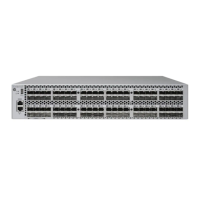276 • STN Reference HP NonStop SSH Reference Manual
STN94 Userid <alias> provided by SSH not valid
SSH sessions with *MENU* and an SSH Guardian system user in alias format that matches SERVICE USER, but the
STN object does not have PRIV-LOGON set via the command:
Safecom ADD DISKFILE STN,
PRIV-LOGON ON
STN Application I/O Handling
Standard SETMODE Functions:
6 line spacing
7 automatic LF
8 block mode / conversational mode
9 interrupt character definitions
11 break owner
12 break mode
14 interrupt character enable/disable
20 echo
22 set /retrieve baud rate. Only used to retrieve values detected by setmode 204
23 character size (always in 8 bit mode)
28 initialize all setmodes to default values, then apply any SCRIPT associated with the window
144 set ignored; retrieve always returns hex 8200 0900
258 full duplex
Extended SETMODE Functions (unique to STN):
201
Only used with special terminals. Enable timing mark flow control. P1=0 (default) disables the feature. 0<P1<10000
specifies the number of bytes to send before sending IAC DO TM and waiting for a response. P2 is a timeout in seconds
(range 1-3600, default 3600); if no response is received to IAC DO TM, output proceeds after the timeout.
202
Only used with special terminals. Enable baud rate detection from remote client using rfc 1079. Default P1=0 disables,
P1>0 enables. P2 presently unused. The baud rate detected can be retrieved by setmode 204 as a 32-bit integer or by
setmode 22 which maps selected baud rates 75-19200 to values 1-15 (using the traditional ATP coding for setmode 22)
and other baud rates to 0.
203
Only used with special terminals. P1=0 default compatible with previous releases. P1=1 discard any data after an
application read is satisfied due to maximum read count up to and including the next line end (ascii CR). P2 presently
unused.
204
Only used with special terminals. Retrieves the speed detected by setmode 202. P1 is the high order word, P2 is the low
order word. Setting this value affects only the value returned in future setmode 204 calls.
205
Only used with special terminals. p1=1 disables echo of ascii EOT (hex 04). p1=0 (default) is compatible with previous
releases and handles EOT like other characters for echo purposes
206
Only used with special terminals. P1=1 disables interrupt character handling for ascii BS/CTRL-H (hex 06), ascii
CAN/CTRL-X (hex 18), and EM/CTRL-Y (hex 19), and also the 6530 control character ascii ENQ (hex 05), p1=0
(default) is compatible with previous releases

